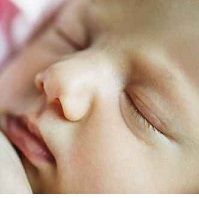Article
Asthma: It Can Begin Before Birth, Study Finds
Author(s):
A UK study suggests that asthma starts in-utero and is triggered by mothers' health. Maternal smoking plays a role.

Childhood asthma may be predestined from the time a fetus is in the first trimester, according to a new study presented at the European Respiratory Society International Congress earlier this month in London, UK.
“First trimester fetal size — a surrogate for fetal lung size – is relevant to symptoms of respiratory physiology through to 15 years of age,” said lead researcher, Stephen Turner MD, who is a senior lecturer at The Institute of Applied Health Sciences at the University of Aberdeen in the U.K. “These findings suggest that antenatal factors contribute to life-long respiratory wellbeing,” he added.
This research is a continuation of the work Turner and his team have done measuring the impact of first and second trimester fetal size and the risk of asthma at five and 10 years old. The latest results extend that risk up to 15 years old. The smaller the young fetus the greater the risk.
The researchers used routine ultrasound to measure fetal size during the first trimester and second trimesters in mothers seen at an antenatal clinic in Aberdeen between 1997 and 1999. These measurements then were correlated with the asthma status and lung functioning of the children at five and 10 and now 15 years old.
For each incremental increase in the first-trimester size, Turner reported a decreased risk of 24% for asthma.
Reduced fetal size has been associated with maternal smoking, insufficient nutrition and pregnancy complications, Turner and his colleagues said in their 2013 study published in the American Journal of Respiratory and Critical Care Medicine . That study also explained that “In the developing human lung, airway development takes place during early fetal life but alveolar development is thought to begin in the later stages of pregnancy and continue into post natal life and therefore exposures or relative deficiencies of nutrients after early infancy are also likely to influence respiratory outcomes.”
The next step, Turner said about the latest research, “is to first replicate these findings in other cohorts and then work out whether it is fetuses which start off small and stay small who have the worst outcomes or whether it is those who start off normal size (before 10 weeks) and then become small who are in trouble. Ultimately, any intervention is going to boil down to mothers not smoking or drinking, having a balanced diet and taking regular exercise, but this is good incentive for a healthy maternal lifestyle.”
Further reading:




